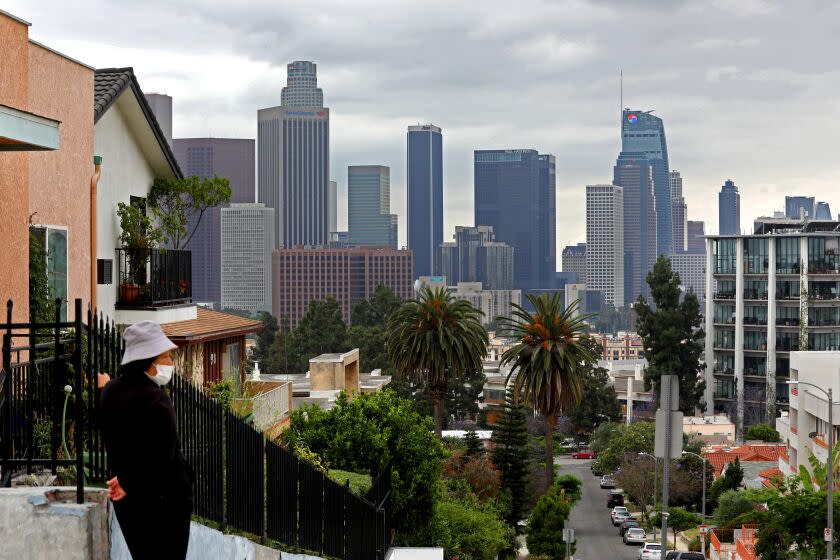Opinion: The California sun finally emerged to greet the summer solstice. Don't get used to it

The poet James Russell Lowell famously asked, "And what is so rare as a day in June?” The line alludes to the precious quality of the month that marks the transition from spring to summer. Lowell was describing this time of year as one we should all cherish.
If only. For those of us living anywhere near the California coast, there is a more fitting and prosaic line: “A persistent onshore flow pattern will keep cooler-than-normal weather in place ... as a broad area of low pressure remains anchored over the region.”
The meteorologist who wrote this, in a recent edition of the National Weather Service’s forecast discussion, was warning in coldly scientific terms of a seemingly endless string of dark, dank days that Californians like me woke up to and went to sleep with for much of May and June. And they came soon after California endured its fifth-coldest March since record-keeping began; so much for “California dreaming on such a winter’s day.”
While much of the rest of the Northern Hemisphere broiled and in some cases burned in record heat, California was stuck in an anomalously cool, wet pattern. Knowing it was due to an abnormally cold Pacific Ocean and high pressure in the Pacific Northwest was of little consolation.
Read more: Opinion: El Niño is back. What does that mean for an already overheated California?
By now you’ve probably figured out that I’m something of a weather geek. Suffice it to say I feel unfulfilled if I miss one of the four daily updates to the weather service’s forecast discussion. And though I’m hardly an atmospheric scientist, I know enough to crawl back under the covers after reading that “the forecast period will be dominated by broad-scale cyclonic flow.”
What mattered more to me and my fellow Californians than all this meteorological babble was our inability to enjoy the season’s early sunrises and late sunsets. Day after day, we were greeted by a relentless marine layer that often extended as unusually far inland as Castaic Lake and Vasquez Rocks. We Southern Californians were at least temporarily among the ranks of such world-class cloud dwellers as the residents of Bogotá, Colombia, and Bergen, Norway, which can count on hundreds of overcast days a year.
Yes, “May Gray” and “June Gloom” are to be expected in California, but what occurred over the last few months was beyond the pale.
That said, in the big picture, should the clouds affect our outlook? Save sunbathing and shadow puppetry, outdoor activities can still take place. And those worried about vitamin D can always substitute supplements for sunshine.
“How can you complain about living in Santa Barbara?” an East Coast friend asked me the other day. Indeed, I realize how fortunate I am to live in a place with so many opportunities to be in the open air — even if that air is perpetually hovering around a chilly 63 degrees.
But there really is no replacement for the orb now making its long-overdue appearance over much of Southern California. The intensity and brilliance of the late-spring light illuminating everything it touches cannot be overstated.
Read more: Opinion: Don't call it a comeback: California's Tulare Lake never really went away
Just in time for Wednesday’s summer solstice, Tuesday morning’s forecast discussion for the region almost sunnily promised “much less marine layer coverage” and a 3- to 6-degree “bump in temperatures — still a few degrees below normal, but warmer than many days over the last month or so.” Better yet, the forecast looked “on track for some additional warming Wednesday.”
Alas, though, it was expected to be only a brief respite before “cooler/cloudier weather returns Thu/Fri.”
If there’s one thing this cold, wet blanket of fog has taught me, though, it’s the importance of patience and acceptance. It’s been said that even the darkest night will give way to the sun. Presumably the same is true of the grayest day.
Arnie Cooper is a writer and teacher based in Santa Barbara.
This story originally appeared in Los Angeles Times.

